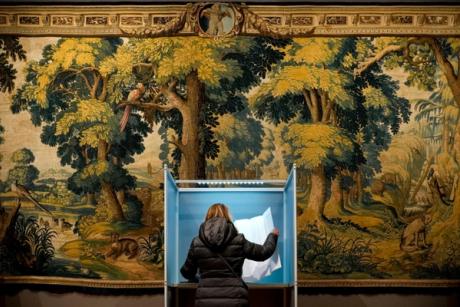
Leading figures in the Dutch art world have warned that its cultural life could suffer long-term damage under the potential next government. Last November, veteran anti-immigration MP Geert Wilders and his Party for Freedom (PVV) won the largest turnout in the country’s general election, and four right-wing parties are now discussing forming a coalition.
There are serious concerns about the implications this could have for the country’s cultural standing around the world, the restitution of looted art, arts funding and access for international students and resident artists.
Last week, the Association of Dutch Museums warned that although more residents than ever are members of a museum card visiting program, public funding must continue because some organizations are struggling. “It is very important that museums remain financially healthy in the future and are accessible to a wide audience and that means the government must continue to invest in our community heritage,” he warned. director Vera Carasso.
Leading figures in the Dutch arts sector have voiced their concern both publicly and privately, highlighting the economic, social and intangible value of a thriving cultural scene.
Wim Pijbes, the former director general of the Rijksmuseum, who is now the director of the Droom en Draad foundation and key figure in an upcoming FENIX Migration Museumsaid The Journal of Art this was the time to put culture on the agenda. “Four parties are trying to form a new government, but it is still questionable whether they will succeed or not, so maybe it is too early to have a final judgment,” he said.
“Let the new government take into account that culture is fragile. It’s easier to break than to mend, and it takes a lot of time [time] to recover from any setback—[whether it’s] money, trust, a changing world. Culture is long-term, and it’s hard to tell…but if you disrupt the connections, the effect can be much larger and unpredictable.”
Emily Pethick, the director of the Rijksakademiein Amsterdam, which runs an international artist-in-residence program that also fosters future talent for jobs in education, museums and other public spaces, says institutions continue to suffer from the effects of cultural budget cuts. in 2011 and the Covid-19 pandemic. She fears they will be harmed by attempts to limit immigration, one of the key goals of the potential new government.
“The Rijksakademie hosts at least 24 international artists a year [so] the indicated future limitations on migration are very worrying,” he added. “A big part of the benefit for Dutch artists is working together and exchanging with international colleagues, and through these [interactions] they make links that take them to other parts of the world. It is already very difficult for artists to stay here beyond their residencies, to contribute to the artistic scene here.
“If this is further curtailed, there will be a shrinking of current internationalism, which would be hugely damaging and would certainly create a more disconnected and more internal cultural sphere.”
Annabelle Birnie, director of the H’ART Museum, formerly the Hermitage Amsterdam, noted that all kinds of arts and cultures help Dutch society to process difficult issues and opinions without conflict.
Although its museum does not receive public funding, it depends on international collaboration with the Center Pompidou in Paris, the Smithsonian Institution in the US USA and the British Museum. Without this global input, he says, the country would be poorer. “It’s an international scene, a big chain, and if somewhere breaks, it’s bad for everyone,” he said. “The artists are on the shoulders of their art schools, the museums are on the shoulders of the artists, and if the chain breaks, it won’t help us anymore. [develop] the tools of the 21st century to look at the world in which we live. There is much to gain from art and culture. And we’re too small to look in.”

